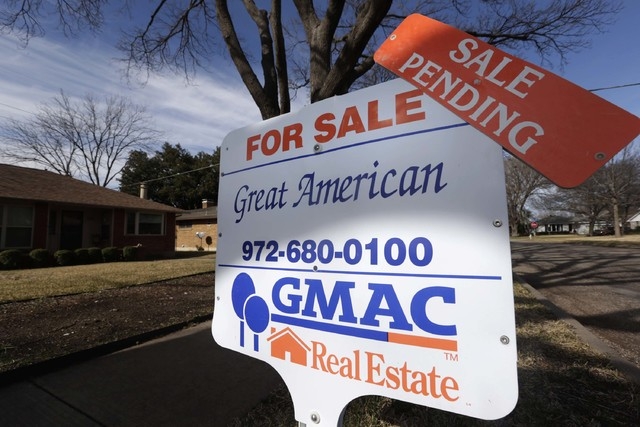Contracts to buy U.S. homes plunge in September

WASHINGTON — The number of Americans who signed contracts to buy existing homes fell in September to the lowest level in nine months. The decline reflects higher mortgage rates and home prices that have made purchases more costly.
The National Association of Realtors said Monday that its seasonally adjusted pending home sales index dropped 5.6 percent last month from August to a reading of 101.6. That also pushed the index below its year-ago level, the first time that has happened in nearly 2½ years.
There is generally a one- to two-month lag between a signed contract and a completed sale. The drop suggests final sales will decline in the coming months.
Contracts to buy homes have slowed in recent months as mortgage rates reached a two-year high over the summer. Rates rose in response to speculation that the Federal Reserve would reduce its stimulus this year.
But the Fed held off taking any action during its meeting in mid-September, and rates have fallen since then. The decline could help boost contract signings in October. The average rate for a 30-year mortgage was 4.13 percent last week, according to mortgage buyer Freddie Mac.
Many economists say the housing recovery should continue, albeit with slower gains in home sales. They note that home prices and mortgage rates remain low by historical standards.
Monday’s report “is in line with other housing indicators … that suggest the pace of improvement in housing markets has slowed,” Cooper Howes, an economist at Barclays Capital, said in a note to clients.
Home prices jumped 12.4 percent in August compared with a year earlier, according to real estate data provider CoreLogic. That’s near the fastest pace in seven years.
Last week, the Realtors’ group said final sales of existing homes fell 1.9 percent last month to a seasonally adjusted annual rate of 5.29 million in September. That’s down from a pace of 5.39 million in August, which was revised lower. The sales pace in August equaled July’s pace. Both were the highest in four years and are consistent with a healthy market.
The September decline in pending home sales was reported a day before the Fed begins a two-day policy meeting.
Policymakers are unlikely to reduce their efforts to stimulate the economy, which includes $85 billion a month in bond purchases. Those purchases are intended to lower longer-term interest rates and spur more borrowing and spending.
Fed Chairman Ben Bernanke suggested in late May that the Fed might slow the bond-buying program by the end of the year. But in September, the Fed held off after expressing concerns that rising mortgage rates were slowing economic growth.
The impact of the 16-day partial government shutdown is likely slowing growth in the final three months of the year. As a result, many economists expect the Fed will continue its current level of bond-buying until next year.